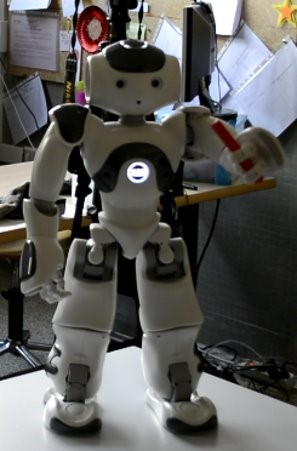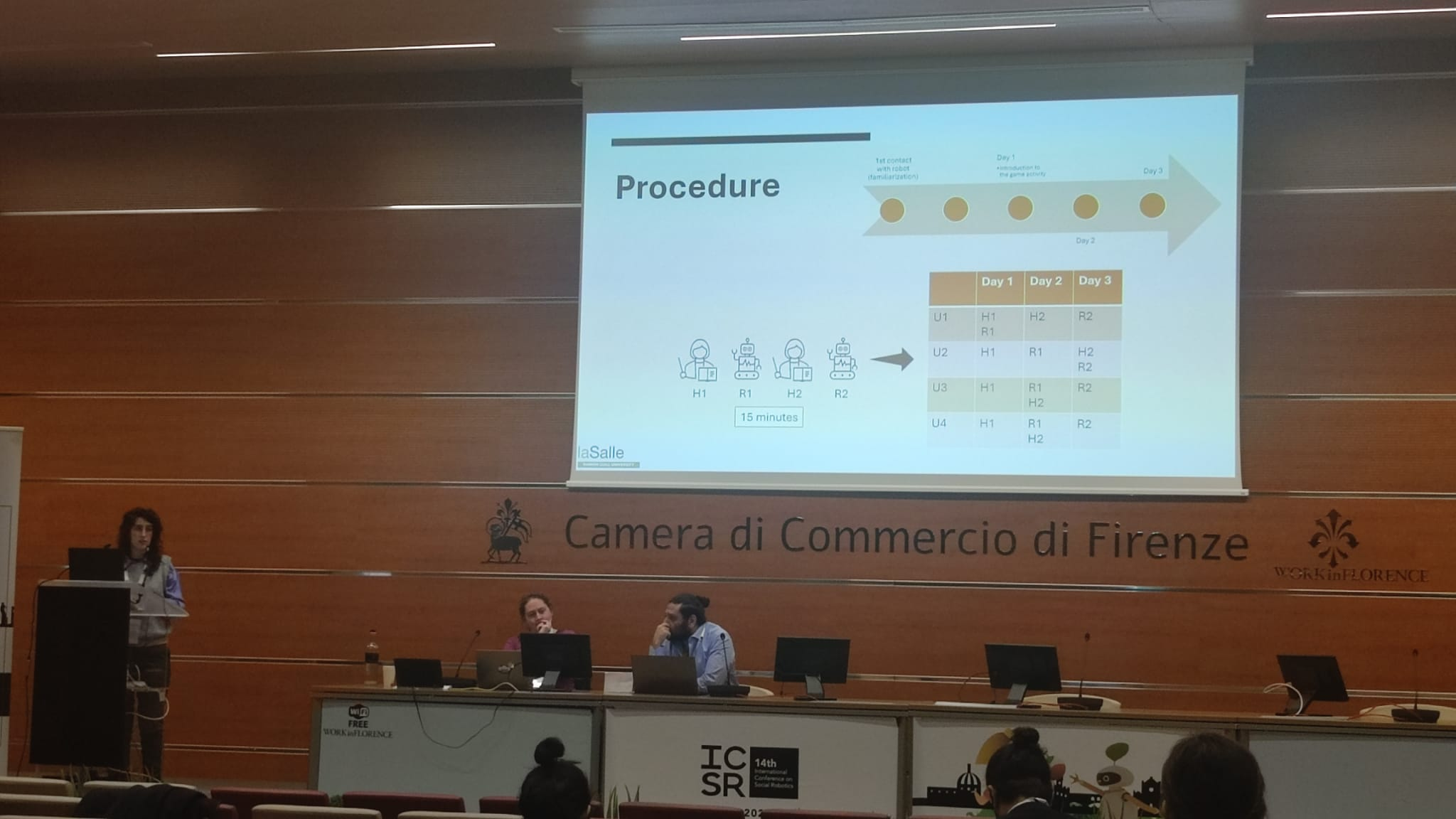Celebration of the 14th edition of the International Conference on Social Robotics (ICSR2022) in Florence

The participants in the study are four boys aged 5, 6, 12 and 14, as well as three educators.
In the Wainer study, they have developed an activity in which a child interacts either with a person (a stranger to the child, i.e. not known to the child before) or with a robot. The aim of the game is to eliminate all the figures on the screen, with the two players having to cooperate. Each player controls one of the bars (blue or red) and the intersection (yellow zone) is where the 'cursor' is located.

The NAO, not pressing keys, has a stick that only indicates, with its color, the bar it controls. To indicate when it presses the E or Delete button, it quickly lowers its arm.

The SIEI children have met the NAO two days before in the first session so that they have a first contact with the robot.
Also following the Wainer's work, each child has done four sessions, where the educator and the robot have been alternating (H1, R1, H2 and R2), making a total of two sessions with the educator and two sessions with the NAO. Each session lasted 15 minutes.
After a qualitative analysis, the main conclusion drawn from the work is that personalization is a key factor for the interaction with the robot. It can be improved:
- Say the child's name to improve his or her attention when the robot speaks to him or her.
- Decide with the child how to coordinate and thus give space for dialogue between the robot and the child.
- Include more motivational feedback than just verbal (e.g., high fives, clapping...).
- Personalize the game according to the child's preferences.
- Have a space for dialogue with the educators to understand what aspect they want to work on with the child, since each child is different and their needs must be taken into account.

